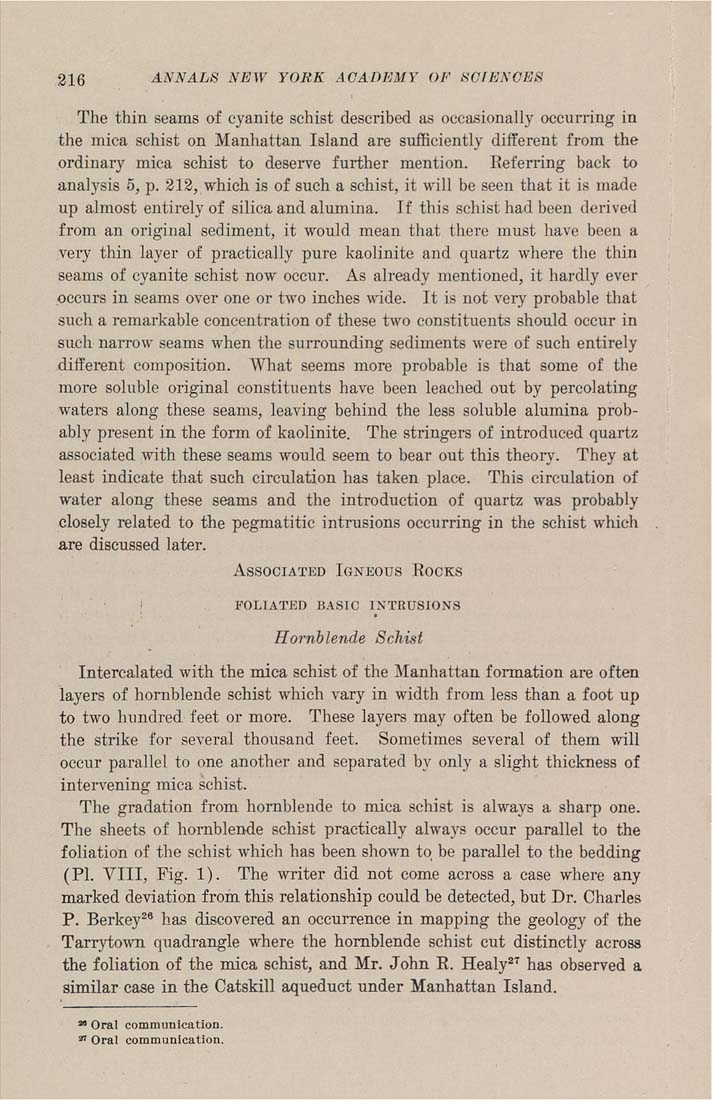216 ANNALS NEW YORK ACADEMY OF SCIENCES
The thin seams of cyanite schist described as occasionally occurring in
the mica schist on Manhattan Island are sufficiently different from the
ordinary mica schist to desei-ve further mention. Referring back to
analysis 5, p. 212, which is of such a schist, it will be seen that it is made
up almost entirely of silica and alumina. If this schist had been derived
from an original sediment, it would mean that there must have been a
very thin layer of practically pure kaolinite and quartz where the thin
seams of cyanite schist now occur. As already mentioned, it hardly ever
occurs in seams over one or two inches wide. It is not veiy probable that
such a remarkable concentration of these two constituents should occur in
such naiTow seams when the surrounding sediments were of such entirely
different composition. What seems more probable is that some of the
more soluble original constituents have been leached out by percolating
waters along these seams, leaving behind the less soluble alumina prob¬
ably present in the form of kaolinite. The stringers of introduced quartz
associated with these seams would seem to bear out this theory. They at
least indicate that such circulation has taken place. This circulation of
water along these seams and the introduction of quartz was probably
closely related to the pegmatitic intrusions occurring in the schist which
are discussed later.
AssociATKD Igneous Rocks
; I'OLIATED BASIC INTRUSIONS
Hornblende Schist
Intercalated with the mica schist of the Manhattan formation are often
layers of hornblende schist which vary in width from less than a foot up
to two hundred feet or more. These layers may often be followed along
the strike for several thousand feet. Sometimes several of them will
occur parallel to one another and separated by only a slight thickness of
intervening mica schist.
The gradation from hornblende to mica schist is always a sharp one.
The sheets of hornblende schist practically always occur parallel to the
foliation of the schist which has been shown to be parallel to the bedding
(PI. VIII, Fig. 1). The writer did not come across a case whei'e any
marked deviation from this relationship could be detected, but Dr. Charles
P. Berkey-^ has discovered an occurrence in mapping the geology of the
Tarryto^vn quadrangle where the hornblende schist cut distinctly across
the foliation of the mica schist, and Mr. John R. Healy^^ has observed a
similar case in the Catskill aqueduct under Manhattan Island.
*• Oral communication.
^ Oral communication.
|








